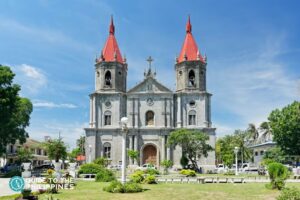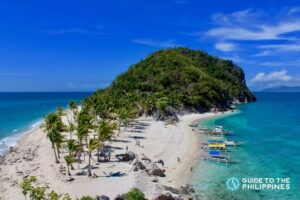Iloilo City: The Heart of the Philippines
 Hello, dear readers! Today I want to share with you some of the reasons why I love Iloilo City, the capital and the primate city of the Western Visayas region in the Philippines. Iloilo City is a highly urbanized city on the southeastern coast of Panay Island, facing the Iloilo Strait and the island of Guimaras. It is a vibrant and dynamic city that offers a rich blend of history, culture, cuisine, and nature. Iloilo City is also known as the “City of Love” because of its friendly and hospitable people, who speak the sweet and melodious Hiligaynon language. In this blog post, I will explore some of the attractions and activities that make Iloilo City a wonderful place to visit and live.
Hello, dear readers! Today I want to share with you some of the reasons why I love Iloilo City, the capital and the primate city of the Western Visayas region in the Philippines. Iloilo City is a highly urbanized city on the southeastern coast of Panay Island, facing the Iloilo Strait and the island of Guimaras. It is a vibrant and dynamic city that offers a rich blend of history, culture, cuisine, and nature. Iloilo City is also known as the “City of Love” because of its friendly and hospitable people, who speak the sweet and melodious Hiligaynon language. In this blog post, I will explore some of the attractions and activities that make Iloilo City a wonderful place to visit and live.
History and Heritage
Iloilo City has a long and colorful history that dates back to the pre-colonial era, when it was a flourishing trading port that attracted merchants from China, India, Arabia, and other parts of Southeast Asia. It was also the site of one of the earliest Spanish settlements in the Philippines, established in 1566 by Miguel Lopez de Legazpi. During the Spanish colonial period, Iloilo City became an important center of agriculture, commerce, education, and religion. It was also a bastion of Filipino nationalism and resistance against foreign invaders, such as the British, the Americans, and the Japanese1
Iloilo City boasts of many historical and cultural landmarks that showcase its rich heritage and legacy. Some of them are:

- Calle Real: The historic downtown district that features well-preserved heritage buildings from the late 19th and early 20th centuries. These buildings reflect various architectural styles, such as Art Deco, Neoclassical, Beaux-Arts, and Filipino. Calle Real is also a lively commercial area that offers various shops, restaurants, cafes, and bars2
- Jaro Cathedral: The seat of the Archdiocese of Jaro, one of the oldest dioceses in the Philippines. The cathedral was built in 1864 in Romanesque Revival style, with a separate bell tower that stands across the street. The cathedral is famous for its image of Nuestra Señora de la Candelaria (Our Lady of the Candles), which is believed to be miraculous and is venerated as the patroness of Western Visayas3
- Molo Church: The parish church of Molo district, which is known as the “Athens of the Philippines” because of its illustrious sons and daughters who excelled in arts, literature, politics, and religion. The church was built in 1831 in Gothic-Renaissance style, with two red spires that dominate the skyline. The church is also known as the “Women’s Church” because of its 16 statues of female saints that adorn its interior3
- Casa Mariquit: The ancestral house of former Vice President Fernando Lopez Sr., who served under Presidents Elpidio Quirino and Ferdinand Marcos. The house was built in 1928 in Art Nouveau style, with intricate woodwork and antique furniture. The house also contains memorabilia and artifacts from the Lopez family’s political and business legacy4
Cuisine and Culture
Iloilo City is a gastronomic paradise that offers a variety of dishes that reflect its diverse influences and flavors. Iloilo City is famous for its seafood, especially its oysters, crabs, shrimps, mussels, and fish. It is also known for its signature dishes, such as:
- La Paz Batchoy: A noodle soup made with pork innards, bone marrow, garlic, onions, and chicharon (pork cracklings). It is served with fresh egg noodles, hard-boiled eggs, and spring onions. It is best eaten with puto (steamed rice cake) or pandesal (bread roll). La Paz Batchoy originated from La Paz district, where it was invented by Chinese immigrants in the early 20th century.
- Pancit Molo: A dumpling soup made with chicken broth, shredded chicken, and wonton wrappers filled with ground pork, shrimp, and vegetables. It is garnished with toasted garlic, spring onions, and sesame oil. Pancit Molo is influenced by Chinese cuisine, but has a distinct Filipino twist. It is usually served during special occasions or cold weather.
- Chicken Inasal: A grilled chicken dish marinated in vinegar, lemongrass, ginger, garlic, salt, and pepper. It is cooked over hot coals until golden and crispy. It is served with rice, sinamak (spicy vinegar), and atsuete (annatto) oil. Chicken Inasal is a popular street food that originated from Bacolod City, but has become a staple in Iloilo City as well.
- Biscocho: A toasted bread snack coated with butter and sugar. It is crunchy and sweet, and can be eaten as a dessert or a snack. Biscocho is a Spanish word that means “biscuit”, but the Ilonggo version is different from the European one. Biscocho is usually paired with coffee or hot chocolate.
Iloilo City is also a cultural hub that showcases its vibrant and dynamic arts, music, and festivals. Some of them are:
- Dinagyang Festival: A religious and cultural festival that celebrates the feast of Santo Niño (the Child Jesus) and the arrival of Malay settlers in Panay. It is held every fourth Sunday of January, and features colorful costumes, lively dances, and energetic drumbeats. The highlight of the festival is the Ati-Atihan competition, where tribes representing different barangays (villages) perform in the streets to honor Santo Niño and the Ati people, the original inhabitants of Panay.
- Paraw Regatta Festival: A sailing festival that showcases the paraw, a traditional double outrigger sailboat that is native to the Visayas region. It is held every third Sunday of February, and features a race among hundreds of paraws along the Iloilo Strait. The festival also includes other activities, such as cultural shows, sports events, food fairs, and fireworks displays.
- Iloilo Arts Festival: An annual arts festival that promotes and celebrates the local arts scene in Iloilo City. It is held every February or March, and features various events, such as art exhibits, film screenings, theater performances, poetry readings, music concerts, and workshops. The festival aims to showcase the talents and creativity of Ilonggo artists, as well as to inspire and educate the public about art and culture.
Nature and Adventure
Iloilo City is not only a city of history, culture, and cuisine, but also a city of nature and adventure. Iloilo City offers many opportunities to enjoy the beauty and bounty of nature, as well as to experience thrilling and exciting activities. Some of them are:

- Iloilo River Esplanade: A linear park that runs along the banks of the Iloilo River, which is considered as one of the cleanest urban rivers in the Philippines. The esplanade is a popular spot for jogging, biking, walking, or relaxing. It also offers scenic views of the river, the city skyline, and the sunset. The esplanade also hosts various events, such as concerts, festivals, and fitness classes.
- Guimaras Island: A neighboring island that is famous for its sweet and succulent mangoes, which are considered as the best in the world. Guimaras Island is also known for its pristine beaches, lush forests, rolling hills, and charming towns. Guimaras Island can be reached by a 15-minute boat ride from Iloilo City’s Parola Wharf or Ortiz Wharf. Some of the attractions in Guimaras Island are Alubihod Beach, Guisi Lighthouse, Trappist Monastery, and Mango Research Center.
- Garin Farm: A farm resort that offers a combination of agriculture, leisure, and pilgrimage. Garin Farm is located in San Joaquin town, about an hour’s drive from Iloilo City. Garin Farm features various attractions, such as a farm tour, a fishing lagoon, a swimming pool, a zip line, a horseback riding trail, and a hilltop chapel. The most famous attraction in Garin Farm is the 456-step stairway that leads to a giant cross and a replica of heaven, which offers a breathtaking view of the surroundings.
